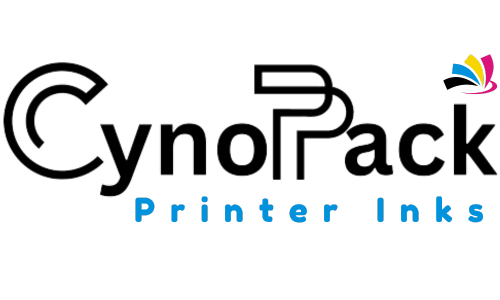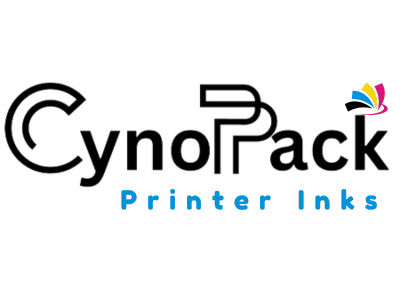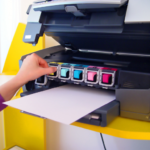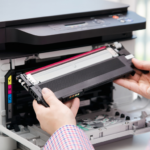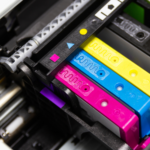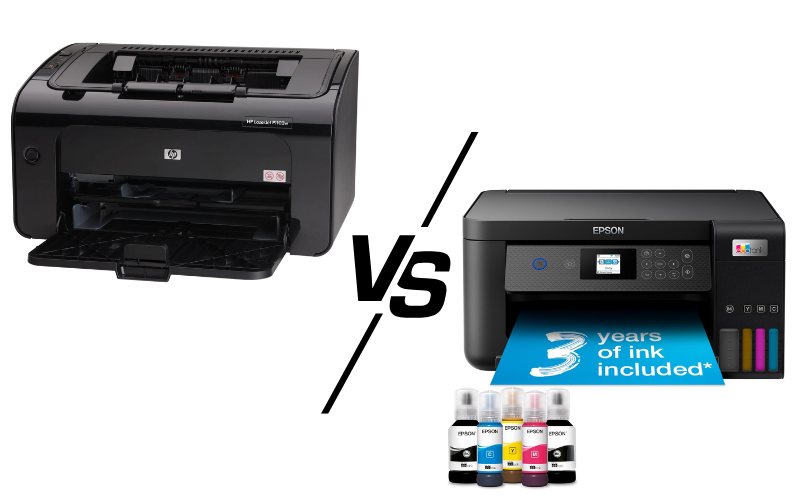If you’re buying a new printer for your home or office in the UK, you’ll likely face a key question: Should you choose an inkjet or a laser printer?
Both technologies have their strengths, but the right choice depends on what you print, how often you print, and your budget. In this guide, we’ll break down the main differences between inkjet and laser printers — and help you decide which is best for your needs.
1. How Inkjet and Laser Printers Work
Inkjet Printers
- Spray liquid ink directly onto the paper through microscopic nozzles.
- Capable of producing high-resolution images and sharp text.
- Ideal for printing photos, detailed graphics, and short-run documents.
Related: How to Save Ink and Print Smarter
Laser Printers
- Use toner powder and a laser beam to fuse the powder onto the paper using heat.
- Known for fast, high-volume printing.
- Best suited for text documents, business reports, and large print jobs.
2. Print Quality
- Inkjet: Exceptional for photo printing and colour-rich images.
- Laser: Crisp and clean for text, but colour photo quality is generally lower than inkjet.
3. Speed
- Inkjet: Typically slower, printing 5–15 pages per minute (ppm).
- Laser: Faster, with 15–50 ppm common for office models.
4. Cost Per Page
- Inkjet: Lower initial purchase price, but higher ongoing ink costs.
- Laser: Higher upfront cost, but lower cost per page over time.
Save more with Cynopack Compatible Ink Cartridges — up to 70% cheaper than OEM without sacrificing quality.
5. Durability of Prints
- Inkjet: Prints may fade over time and can smear if exposed to water.
- Laser: Toner prints are more resistant to smudging and fading.
6. Size and Footprint
- Inkjet: Smaller and lighter — ideal for home offices and limited desk space.
- Laser: Generally larger and heavier, better suited for dedicated office spaces.
7. Maintenance
- Inkjet: Requires regular use to prevent ink from drying in the nozzles.
See: How to Prevent Ink Cartridges from Drying Out - Laser: Less frequent maintenance, but toner replacement can be messy.
8. Which Printer is Best for You?
| If You… | Choose This |
|---|---|
| Print high-quality photos | Inkjet |
| Need fast printing for large volumes | Laser |
| Have a small budget upfront | Inkjet |
| Want the lowest long-term running costs | Laser |
| Print infrequently | Laser (less chance of drying issues) |
| Need compact size for small space | Inkjet |
9. Pros and Cons at a Glance
Inkjet Pros
- High print quality for images.
- Lower initial cost.
- Smaller footprint.
Inkjet Cons
- Ink can dry out if unused.
- Higher cost per page.
- Slower printing.
Laser Pros
- Fast printing speeds.
- Lower cost per page over time.
- Durable prints.
Laser Cons
- Higher initial purchase price.
- Larger size.
- Colour quality not as strong for images.
10. Key Takeaways
- Choose Inkjet if you want brilliant photo quality and only print occasionally.
- Choose Laser if you need fast, reliable text printing at a lower cost per page.
And remember — whichever you choose, you can reduce running costs significantly with Cynopack’s high-quality compatible cartridges for major printer brands.
Frequently Asked Questions (AEO-Optimised)
Q1: Is inkjet better than laser for home use?
For casual printing, photos, and small spaces, inkjet is ideal.
Q2: Is laser better for business printing?
Yes, especially for high-volume text printing and long-term cost savings.
Q3: Which lasts longer — ink or toner?
Toner generally lasts longer without drying out, making it better for infrequent printing.
Q4: Can you get colour laser printers in the UK?
Yes, but colour quality is better in inkjet models for photos.
Q5: Do compatible cartridges work in both inkjet and laser printers?
Yes — Cynopack supplies compatible ink and toner cartridges for many UK printer brands.
